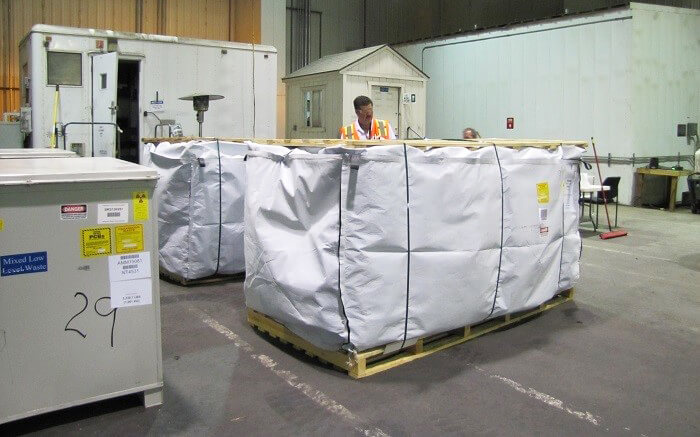Idaho National Labs, a US Department of Energy (DOE) national laboratory, was looking to meet regulatory milestones and reduce costs for a massive planned LLMW cleanup effort, and engaged PacTec MacroBags®, the easy-to-use flexible packaging that meets US DOT shipping regulations AND is approved as MACRO TREATMENT, meeting the LDR requirement for disposal. Low Level Mixed Waste (LLMW) is a waste stream that is both a hazardous waste and a radioactive waste. This combination of hazards in one waste results in a limited number of treatment and disposal options for generators and subsequently high treatment and disposal costs.
PacTec engineers worked with their waste disposal and generator services team to develop a production and delivery schedule of MacroBags®. PacTec’s patented multi-layered macroencapsulation packages are a more affordable alternative to their current method and met all their requirements - Packaging and Treatment in one easy step. The MacroBags® helped the customer eliminate offsite treatment of the LLMW so it could safely be loaded onsite and shipped directly for disposal. To date they have successfully completed 1,772 shipments composed of 40,115 containers/25,204 cubic meters of waste without incident. Total savings since 2014 is estimated at nearly $10 million.
Taken from EM Update, Vol. 12, Issue 18 dated January 15, 2019
Idaho Site Safely Ships Waste to Meet Regulatory Agreements
IDAHO FALLS, Idaho –
DOE cleanup agreements with the state of Idaho require EM to ship nuclear waste for disposal, whether it’s newly generated or been stored at the Idaho National Laboratory (INL) Site for decades.
“Our responsibilities are diverse,” said Bruno Zovi, waste disposal and waste generator services manager of Fluor Idaho, EM’s INL Site cleanup contractor. “While the transuranic waste that’s shipped offsite is crucially important to meeting the Idaho Settlement Agreement, there are other wastes that must also leave the state of Idaho.”
In the last 15 years, EM has completed 1,772 low-level and mixed low-level waste shipments from the INL Site, including 40,115 containers with a total volume of 25,204 cubic meters. “Most importantly, we’ve done it safely and compliantly,” Zovi said.
EM has shipped contaminated debris, soils, sludges, salts, and liquids to seven treatment and disposal facilities across the U.S.

Fluor Idaho Waste Disposal and Waste Generator Services Manager Bruno Zovi inspects a pending shipment of mixed low-level waste prior to shipment offsite.
Fewer than 100 containers of mixed low-level debris waste remain to be shipped for disposal.
As sludges and soils are treated to meet criteria for disposal at treatment and disposal facilities, the volume of waste sometimes increases. This is due to absorbent, inert material added to absorb liquids present in the waste.
If no liquids are found and all other conditions are acceptable, the waste is packaged, sent for final characterization and certification, and prepared for shipment and disposal. The site’s waste management project is preparing to ship several hundred containers of non-transuranic waste that will be generated from the ongoing sludge repackaging project.
Employees implemented the use of multi-layered, mixed low-level waste disposal bags (MacroBags®) that have eliminated the need for offsite treatment prior to shipment to an offsite waste repository, resulting in a cost savings of approximately $10 million since 2014.
-Contributor: Erik Simpson




